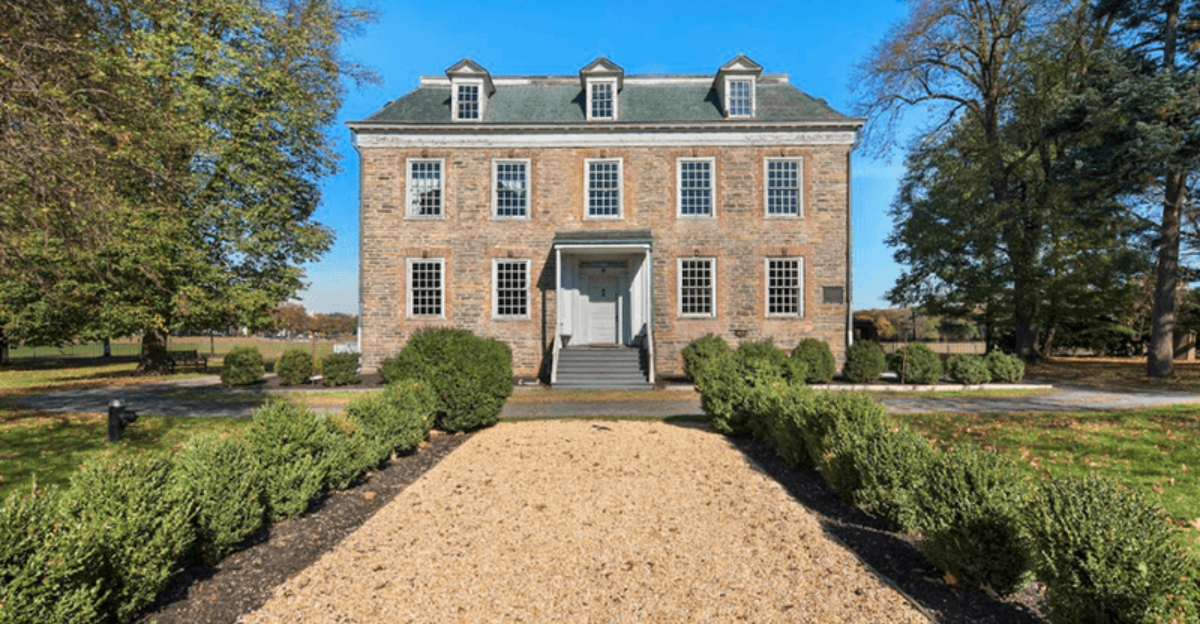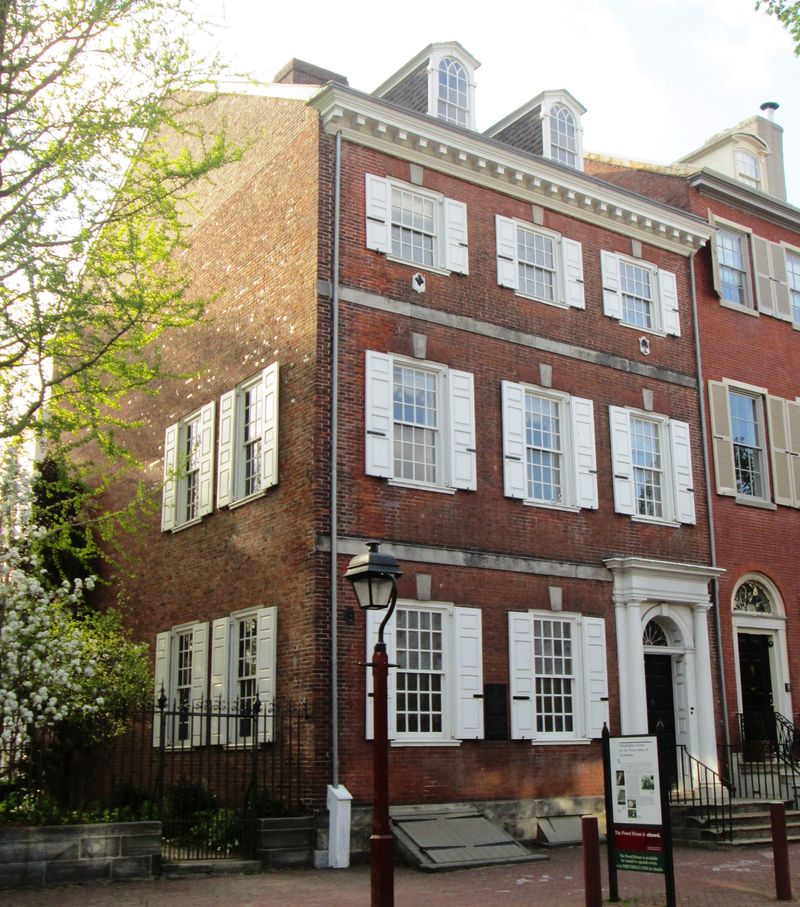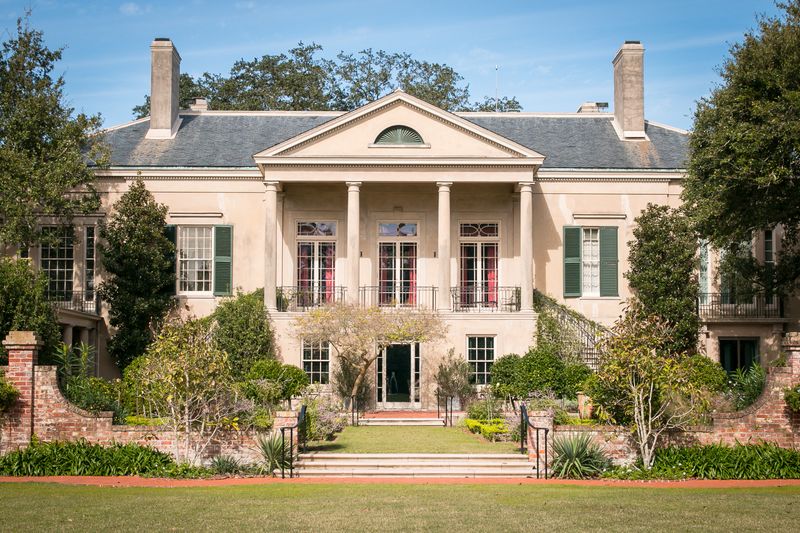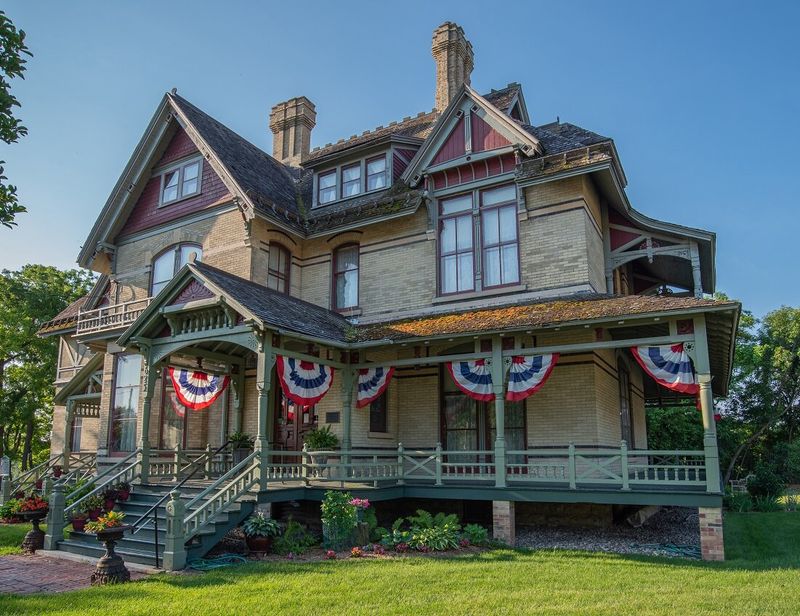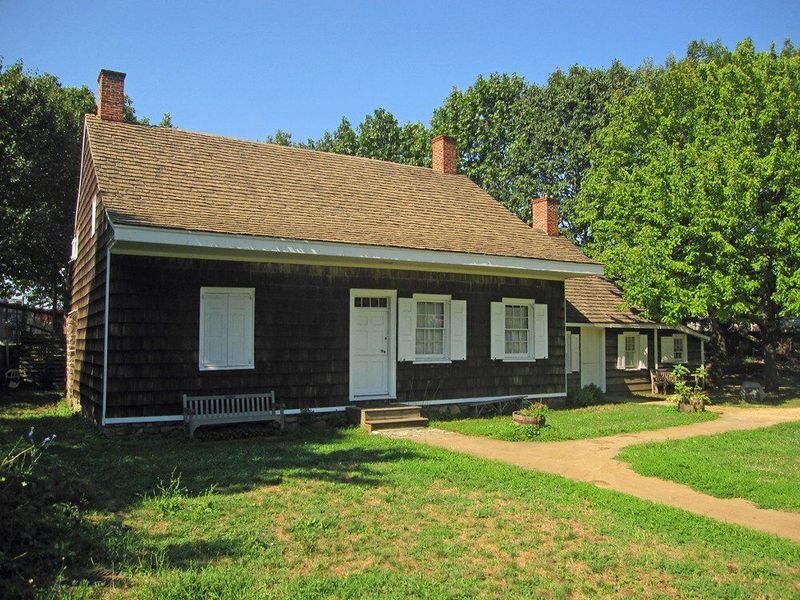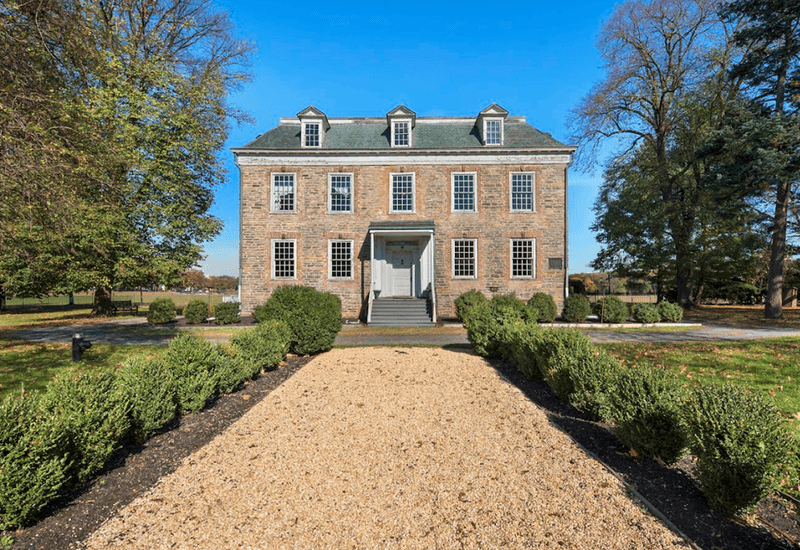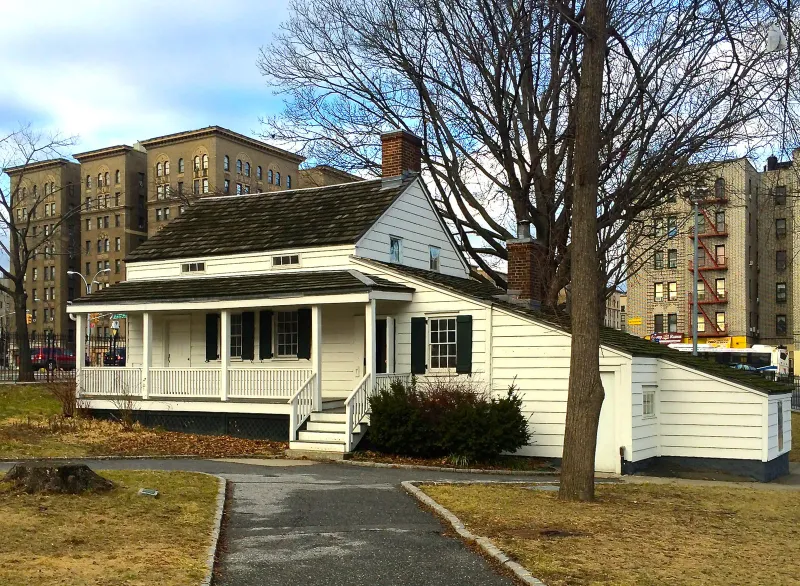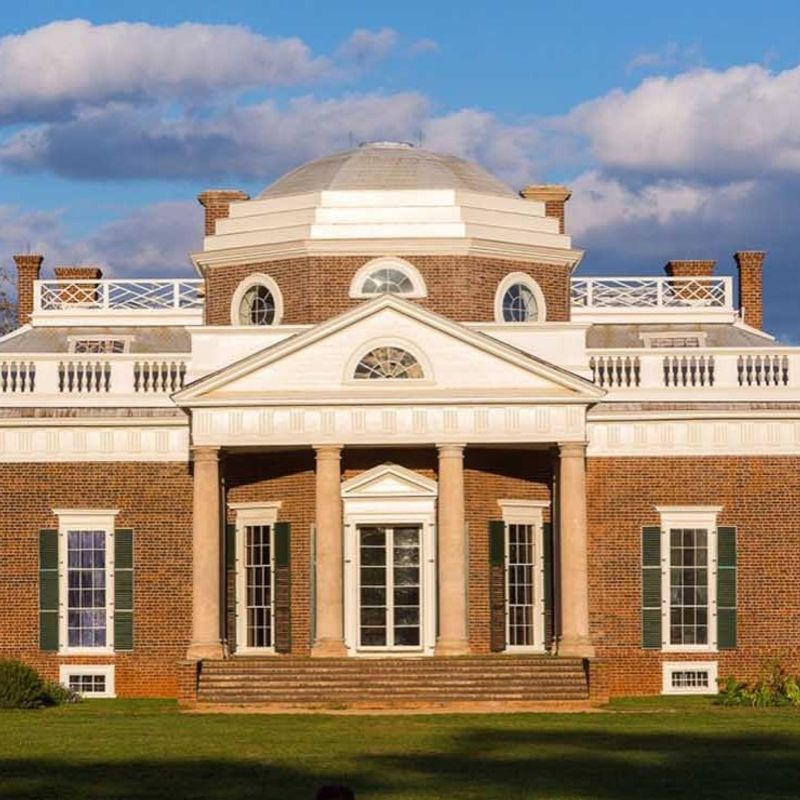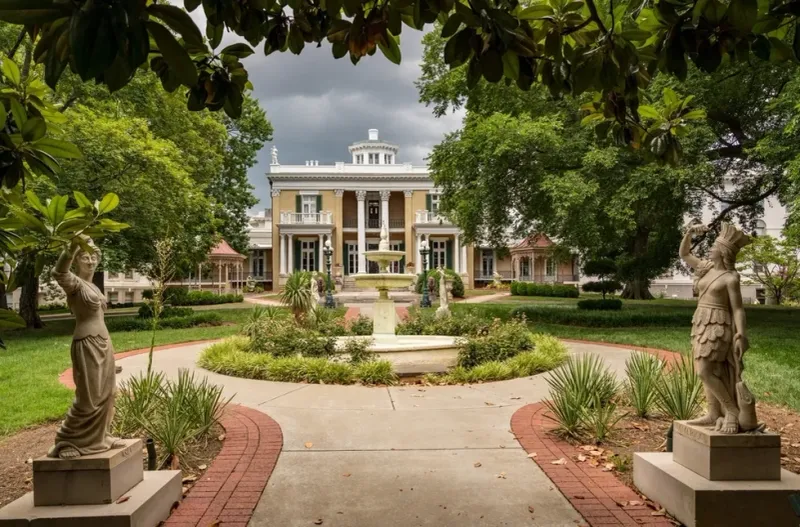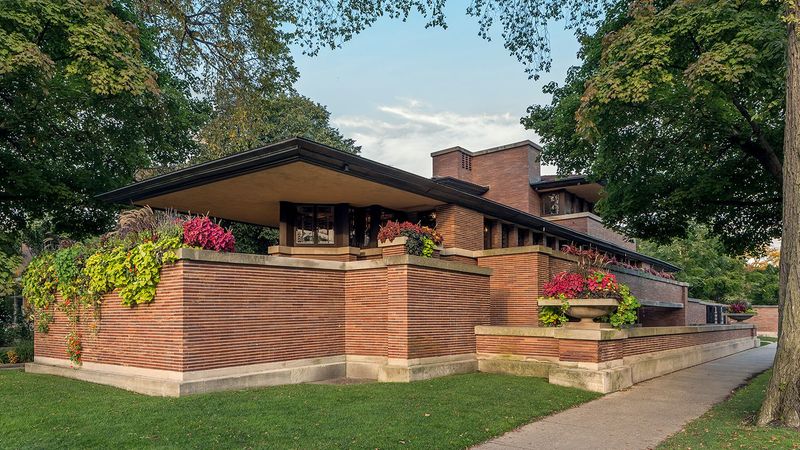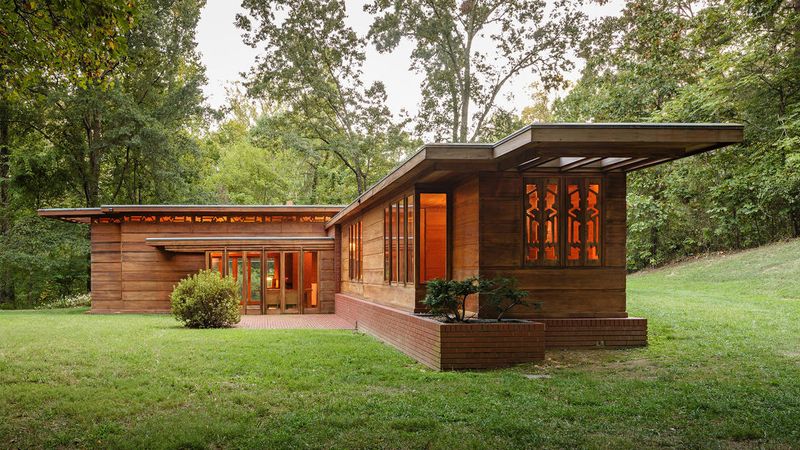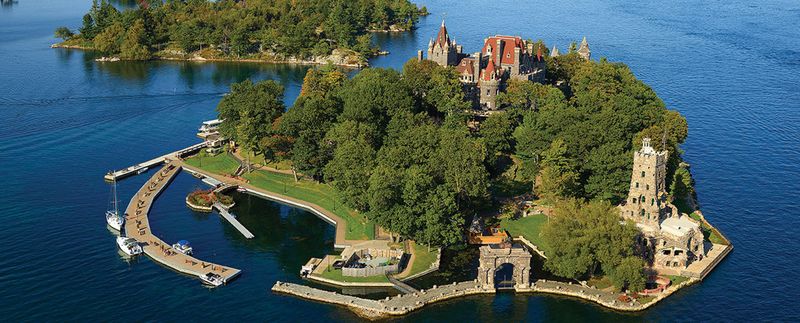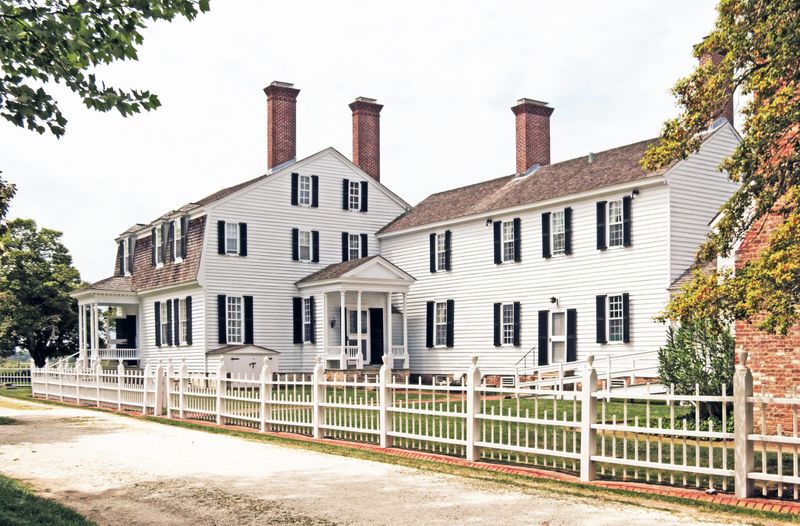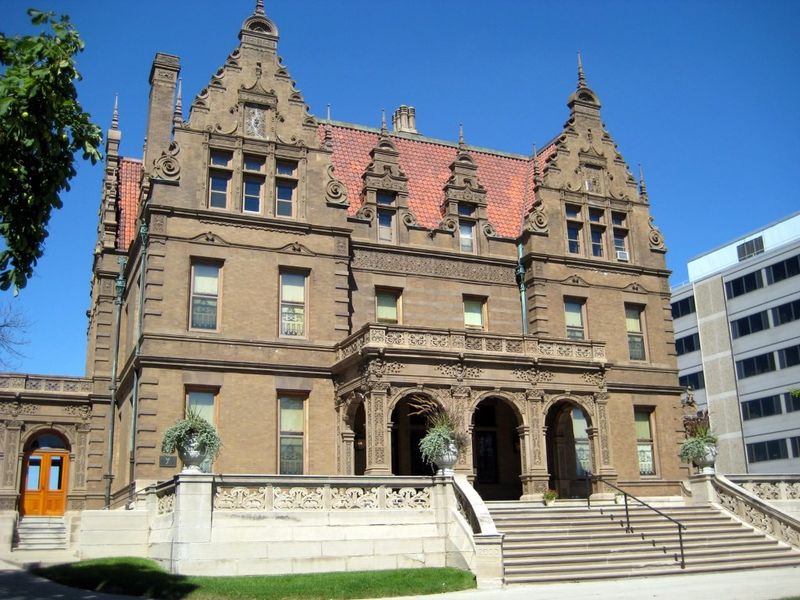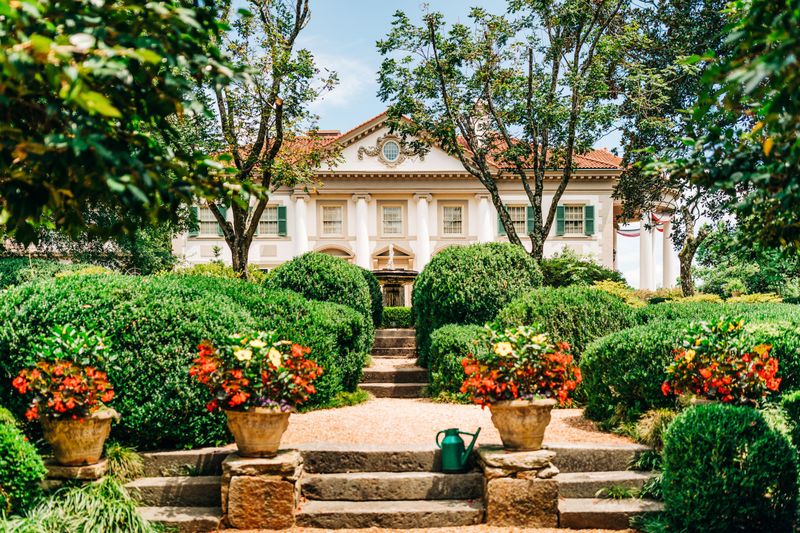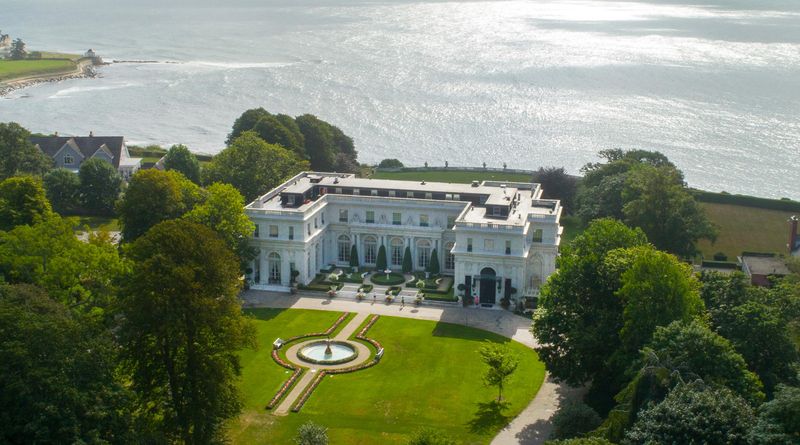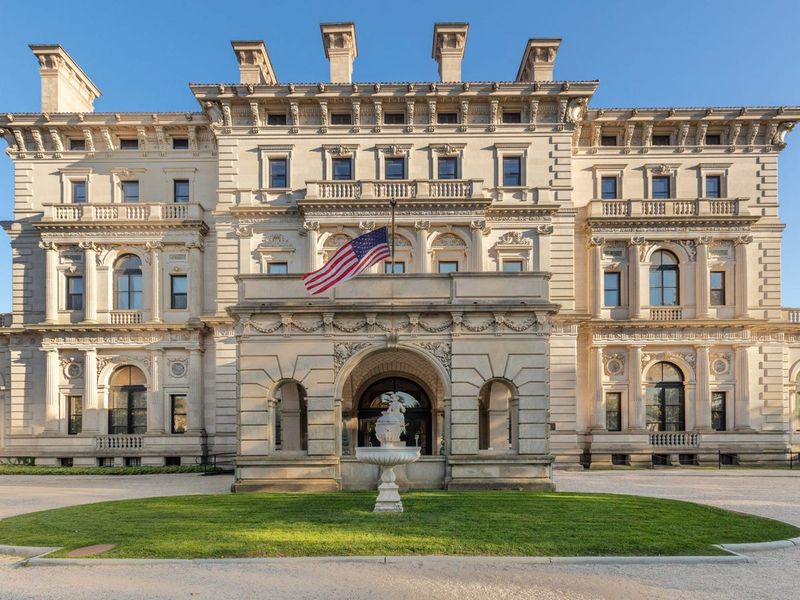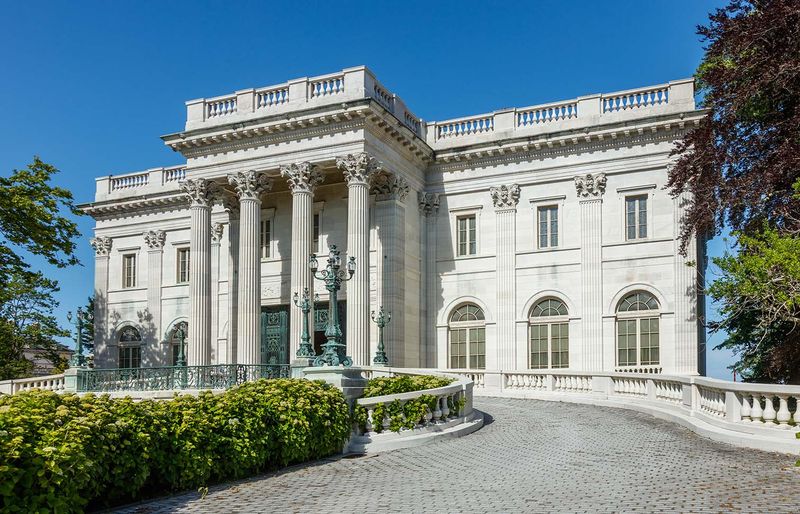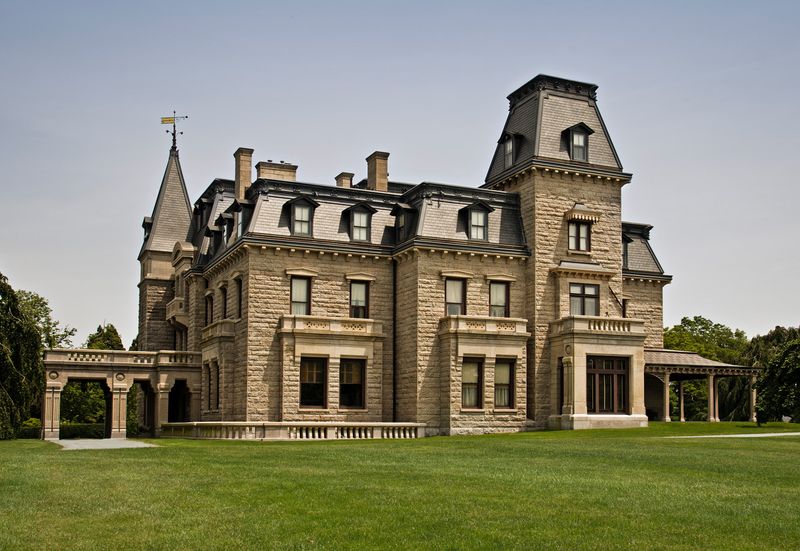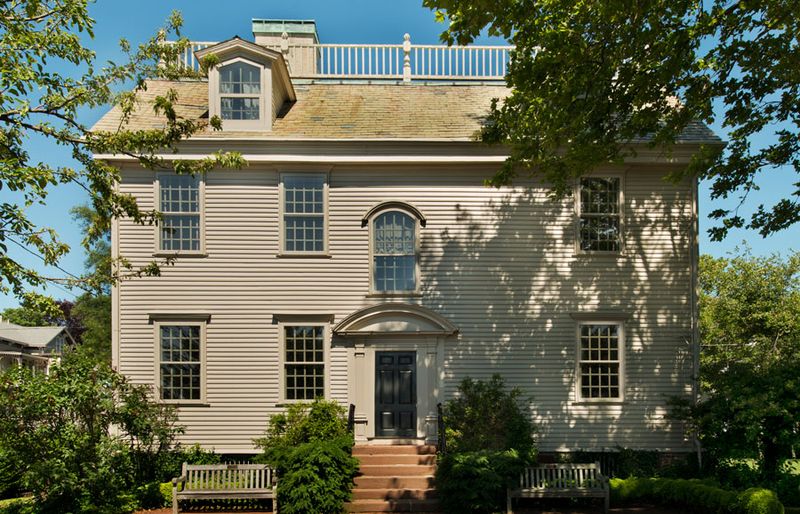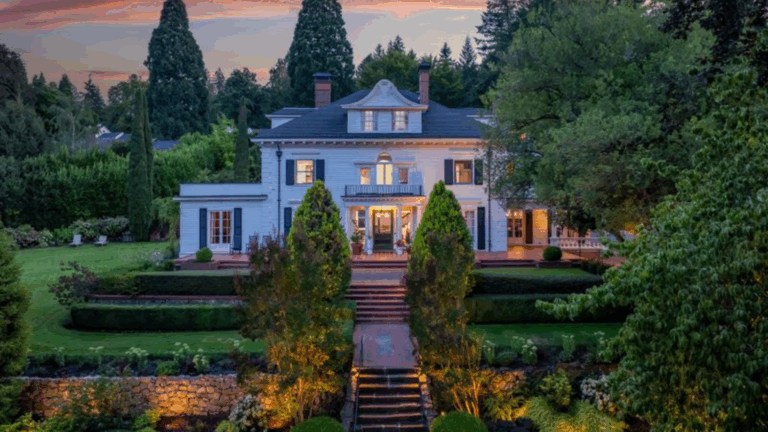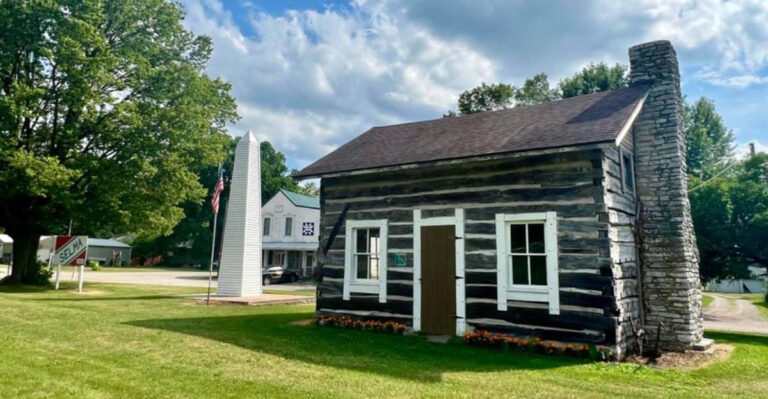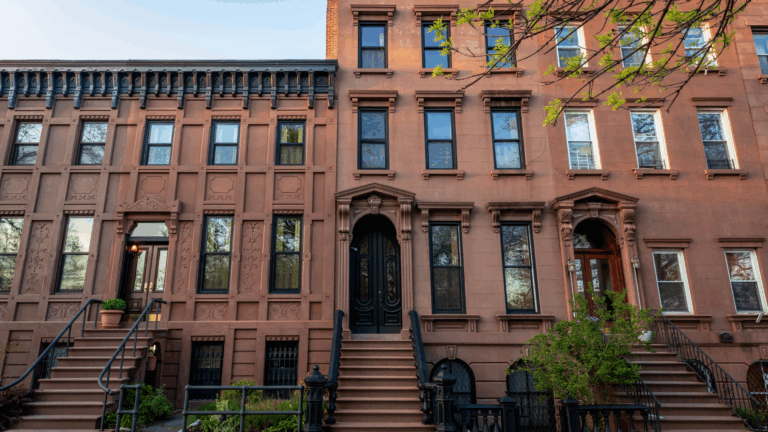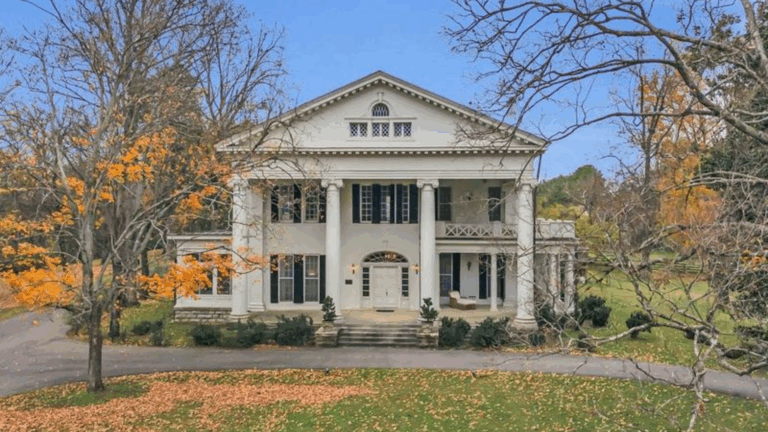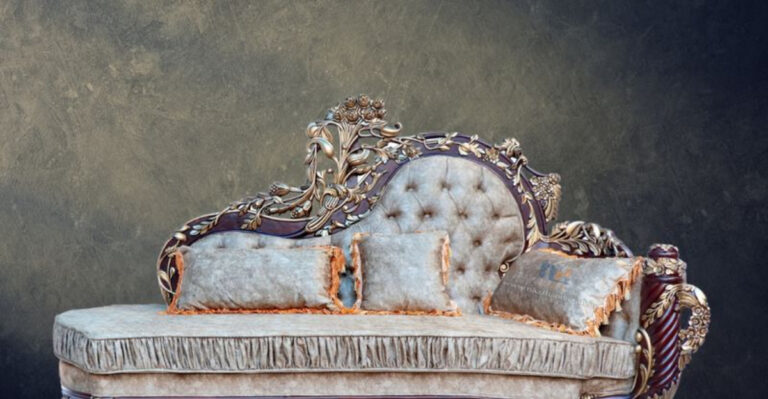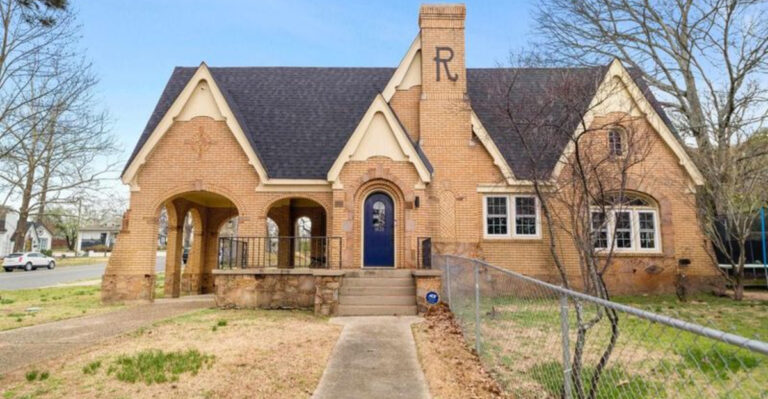20 Beautifully Preserved Homes That Provide A Fascinating Look Into U.S. History
America’s story isn’t just told through textbooks – it lives on in the walls, floors, and details of historic homes.
These beautifully preserved residences offer a window into the past, showcasing the craftsmanship, design trends, and lifestyles of generations gone by.
Exploring these time capsules connects us to our shared heritage and reveals how architecture has shaped our nation. Step inside these remarkable homes for a captivating glimpse into U.S. history.
1. Powel House (Philadelphia, PA)
Behind the elegant brick façade of this Georgian masterpiece lies the story of Philadelphia’s colonial elite. Built in 1765, it hosted luminaries like George Washington and John Adams during pivotal Revolutionary moments.
Careful restoration has preserved original woodwork, plasterwork, and furnishings that showcase the refined taste of its original owner, Samuel Powel, Philadelphia’s last colonial mayor and first post-revolution mayor.
2. Longue Vue Estate (New Orleans, LA)
Surrounded by eight acres of stunning gardens, this Classical Revival mansion represents the pinnacle of 1930s luxury. Unlike many historic homes, Longue Vue was built with surprisingly modern sensibilities, including air conditioning and a sophisticated intercom system.
The original owners, Edgar and Edith Stern, filled their 20-room sanctuary with museum-quality decorative arts and furniture that remain impeccably preserved today, offering visitors a glimpse into Depression-era high society.
3. Hearthstone Historic House Museum (Appleton, WI)
A flick of a switch changed American history forever in this Victorian treasure. As the world’s first home powered by a centralized hydroelectric station using Thomas Edison’s system, Hearthstone illuminated the future in 1882.
The warm glow of original light fixtures still bathes the intricate woodwork and stained glass windows. Four of the home’s original Edison light switches remain operational, connecting visitors directly to a pivotal moment in technological history that transformed how Americans lived.
4. Wyckoff House Museum (Brooklyn, NY)
Weathered wooden beams and hand-hewn floors tell the tale of America’s earliest days in this humble farmhouse. Dating to 1652, it stands as New York City’s oldest surviving structure and the nation’s first landmark designated for preservation.
Dutch colonial techniques are evident throughout, from the distinctive gambrel roof to the H-frame construction. Generations of the Wyckoff family occupied this homestead for over two centuries, gradually expanding it from a simple one-room dwelling into the historic treasure we can explore today.
5. Van Cortlandt House Museum (Bronx, NY)
Revolutionary War secrets hide within these Georgian walls. George Washington used this strategic fieldstone mansion as a temporary headquarters during the conflict, planning military maneuvers in rooms visitors can still explore today.
Built in 1748 for a prominent merchant family, the house features original architectural elements including distinctive H-hinges and wide-plank floorboards. The property’s wheat plantation and gristmill once supplied flour to the Continental Army, making it not just architecturally significant but crucial to American independence.
6. Edgar Allan Poe Cottage (Bronx, NY)
Literary ghosts seem to linger in this modest wooden cottage where America’s master of macabre spent his final years. Within these humble walls, Poe penned several classics including “Annabel Lee” while caring for his ailing wife Virginia.
The small rooms and sparse furnishings reflect the writer’s financial struggles, creating a poignant contrast to his literary legacy. Original elements like the bedroom fireplace where Virginia sought warmth during her tuberculosis battle offer visitors an intimate connection to Poe’s personal tragedies that inspired his haunting works.
7. Monticello (Charlottesville, VA)
Ingenious inventions pepper this architectural masterpiece, reflecting Thomas Jefferson’s brilliant mind. The Great Clock with weights descending through the floor, a dumbwaiter hidden in the fireplace, and a revolving door serving food from the kitchen showcase his forward-thinking designs.
Jefferson spent 40 years perfecting his “essay in architecture,” blending Palladian principles with practical innovations. Recent restoration work has honestly addressed the plantation’s complex legacy by preserving slave quarters and telling the stories of the enslaved people who built and maintained Jefferson’s vision.
8. Belmont Mansion (Nashville, TN)
Adelicia Acklen, one of America’s wealthiest women of the 1860s, created this Italianate villa as her personal showcase. Her shrewd business sense during the Civil War (selling cotton to both sides) funded the mansion’s extravagant features including rare marble statues and elaborate ceiling frescoes.
The 36-acre estate once featured lavish gardens, a zoo, and even a bowling alley. Today, the mansion houses one of the country’s finest collections of 19th-century art and furniture, offering a rare glimpse into the life of a powerful female entrepreneur in the Victorian South.
9. Robie House (Chicago, IL)
Frank Lloyd Wright’s prairie-style masterpiece revolutionized American architecture with its dramatic horizontal lines and open floor plan. Completed in 1910, the home appears to float above its corner lot, with cantilevered roofs extending an astonishing 20 feet beyond their support walls.
Art glass windows – over 170 of them – filter light through geometric patterns inspired by native prairie plants. Wright designed everything from the furniture to the light fixtures, creating a completely integrated living environment that rejected Victorian compartmentalization in favor of flowing, interconnected spaces.
10. Pope–Leighey House (Alexandria, VA)
Affordable beauty was Frank Lloyd Wright’s mission with this modest yet revolutionary Usonian home. Designed in 1939 for a middle-class family with a $7,000 budget (roughly $135,000 today), it showcases Wright’s democratic vision of quality architecture for everyday Americans.
Clever space-saving features abound – built-in furniture, recessed lighting, and clerestory windows that eliminate the need for curtains. The home was actually moved twice to save it from demolition, a testament to its historical significance as one of Wright’s most accessible and influential designs.
11. Boldt Castle (Heart Island, NY)
Love and heartbreak shaped this fairytale castle rising from the Thousand Islands. Hotel magnate George Boldt commissioned this 120-room Rhineland-inspired mansion in 1900 as a testament to his devotion to his wife Louise.
Modern restoration has fulfilled Boldt’s romantic vision, completing stonework, gardens, and interiors that transport visitors to America’s Gilded Age while honoring the bittersweet love story that inspired this architectural fantasy.
12. Eyre Hall (Captain’s Cove, VA)
Time stands remarkably still at this Eastern Shore plantation, continuously occupied by the same family since 1668. The current house, built around 1760, remains filled with original furnishings – not museum pieces, but family heirlooms used by successive generations for over 250 years.
Perhaps most poignant is the rare survival of original slave quarters and dependencies, creating a complete plantation complex that honestly documents both the privileged lives of owners and the enslaved people who made their lifestyle possible.
13. Andrew Low House Museum (Savannah, GA)
Victorian elegance meets Southern charm in this Savannah gem with surprising literary connections. Built in 1848 for a wealthy cotton merchant, its elaborate ironwork and detailed plasterwork exemplify the Greek Revival style with Italianate influences popular among the antebellum elite.
The house later became home to Juliette Gordon Low, founder of the Girl Scouts of America. She hosted early troop meetings in the elegant parlors still furnished with original pieces. The property’s restored gardens feature rare period plants, completing this perfectly preserved snapshot of Old South sophistication.
14. Pabst Mansion (Milwaukee, WI)
Beer built this Flemish Renaissance Revival palace, showcasing how brewing fortunes shaped American cities. Captain Frederick Pabst, of Pabst Blue Ribbon fame, spared no expense on his 1892 mansion, incorporating 14 varieties of rare wood and gold leaf ceilings throughout the 37-room residence.
The captain’s passion for art is evident in the home’s 14 ornate fireplaces, each featuring unique tiles and intricate carvings. After narrowly escaping demolition in the 1970s, painstaking restoration has returned the mansion to its original grandeur, complete with period-appropriate beer memorabilia.
15. Hills & Dales Estate (LaGrange, GA)
Generations of gardening passion bloom at this Italian villa-inspired estate. The property’s spectacular terraced gardens predate the 1916 mansion by nearly 85 years, making them among America’s most historically significant designed landscapes.
Four generations of the Callaway family maintained the property’s original vision, preserving both the mansion’s Neel Reid-designed interiors and the heirloom plants in the gardens, some propagated from specimens planted in the 1840s.
16. Rosecliff Mansion (Newport, RI)
Silver heiress Theresa Fair Oelrichs commissioned this “party palace” specifically for entertaining Newport’s elite. Modeled after the Grand Trianon at Versailles, its 40-foot high ballroom – the largest in Newport – hosted legendary Gilded Age soirées including the famous “Bal Blanc” where everything and everyone was white.
Hollywood recognized Rosecliff’s cinematic beauty, using it as a backdrop for films like “The Great Gatsby” and “Amistad.” The mansion’s heart-shaped staircase and ocean views made it the perfect stage for America’s nouveau riche to display their social ambitions through architecture.
17. The Breakers (Newport, RI)
Opulence reaches its pinnacle in America’s most famous summer “cottage,” built for Cornelius Vanderbilt II in 1895. This 70-room Italian Renaissance palace cost a staggering $7 million (equivalent to over $200 million today) and required a staff of 40 just to maintain it during the brief summer season.
Imported marble, platinum wall panels, and mosaics crafted by artisans brought from Europe showcase the unprecedented wealth of America’s Gilded Age elite. The Great Hall rises 50 feet with a ceiling depicting sky and clouds, creating an impression of limitless luxury for guests entering this monument to capitalism.
18. Marble House (Newport, RI)
Feminist history intertwines with extravagant wealth at this gleaming palace built by William K. Vanderbilt as a birthday gift for his wife Alva in 1892. The $11 million mansion (over $300 million today) incorporated 500,000 cubic feet of marble, giving the property its fitting name.
After divorcing William in a scandalous split, Alva used the house to host women’s suffrage rallies on its sprawling grounds. The home’s Gold Room, modeled after Versailles’ Salon of Hercules, features more than 22-karat gold leaf covering every surface.
19. Chateau-sur-Mer (Newport, RI)
Before the mega-mansions arrived, this Victorian house set Newport’s standard for luxury. Built in 1852 for China trade merchant William Wetmore, it was the most lavish residence in the resort town until the Vanderbilts and their peers began constructing their even more extravagant “cottages.”
Famous architect Richard Morris Hunt transformed the original Italianate villa into a Second Empire château during an 1870s renovation.
20. Hunter House (Newport, RI)
Colonial craftsmanship reaches its zenith in this merchant’s home from 1748. The Georgian architecture features a symmetrical façade with a central pediment and elaborate front door – hallmarks of prosperity in pre-Revolutionary America.
The property houses one of the finest collections of 18th-century Rhode Island furniture, much of it created by the renowned Townsend-Goddard workshop. As Newport’s earliest preserved mansion, Hunter House provides a crucial link to America’s colonial mercantile heritage.

